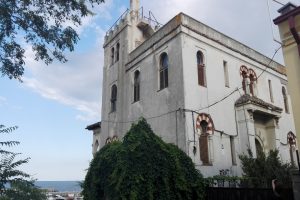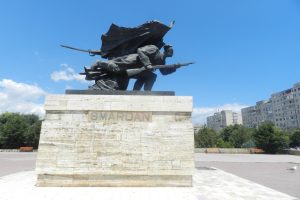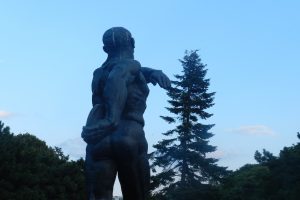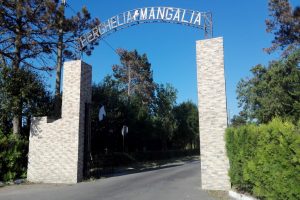

The holiday village is a popular place among the tourists which spend their holidays in the Mamaia resort. Developed in the southern part of the resort, this place is ideal for the people who are on the search of distraction and fun.
Initially, the location was conceived as a complex of restaurants which would reunite the culinary specific of the Romanian provinces. Therefore, in this moment, the majority of the restaurants developed in the holiday village bear names such as Casa Prahoveană, Casa Vâlceană, Casa Dobrogeană, Casa Argeșeană.
Throughout the times, besides these locations there were opened more restaurants, business premises and shops with souvenirs were getting farer and farer from the initial objective. The holiday village became a polyvalent place, full of colors, in which the tourists can take walks, go shopping or can eat different food choices.
By far, the principal attraction of the Holiday village is the famous Luna Park, an amusement park full of lights and colorful games. There are available trains and carousels for the little ones, but also installations for the adults (centrifuge, roller – coaster, hammers, etc.). Also, a big wheel offers an amazing panorama over the Mamaia resort and over the city of Constanța.
Constanța was founded following the Greek colonization of the basin of the Black Sea (the Greek Pontus Euxeinos) by the Milesian colonists in the centuries VII – V b. Chr., under the name of Tomis. This name is probably derived from the Greek word “tomi” which means cutting, splitting. According to the legend, Iason and his Argonauts would have lodged after they had been sent in Caucasus to steel “The Golden Wool”. Followed by the fleet of the king of Colhida, Aietes “the Hawk”, would have cut into pieces his son, Absyrtos, until then being held hostage at the board, in order to obligate the King to search and to gather the relics for the funeral ceremony, giving in this way to the Argonauts the necessary time to run towards Bosphorus. But the archeologists consider more plausible that the cutting (from the line of the shore) to designate, more likely, the ancient port, today submerged, in front of the Casino. Another possible origin of the name would have been Tomiris, Queen of the Massagetae, a Getae tribe which lived between the Black Sea and the Caspian Sea (Herodotus).
The Milesians arrived on these places on a Getae establishment, the new city reaching to a level of a polis only in the IVth – IIIrd century b. Chr. The port used by the Greeks for the commerce with the inhabitants from these regions (Dacians, Scythians and Celts) allowed the development of an urban center. Tomis became a part of the Roman Empire in the year 46, being renamed Constantiana. Publus Ovidius Naso, the Roman poet, found his exile between the years 8 – 17 A.D. and he spent in Constantiana his last eight years of his life.
The city endured the troubled times from the IIIrd and from the IVth century, distressed by the numerous Gothic, Scythian and Hunnish invasions, becoming the residence of the province Scythia Minor (the Latin Scithia Minor, Greek Mikrá Skithía). After the dividing of the Roman Empire, Constanța together with the entire Scythia Minor, was redeemed to the Eastern Empire and remained part of it until the VIIth century, when it was lost due to the migrations of the Slaves and Proto – Bulgarians.






